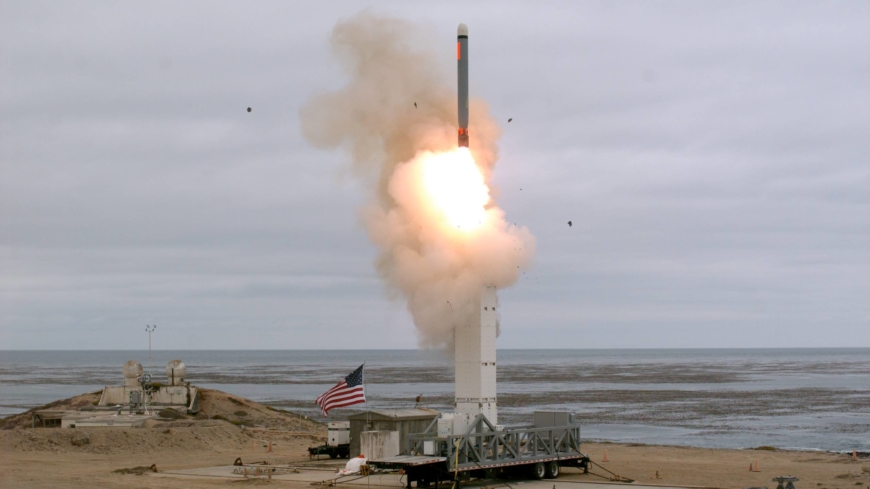[ad_1]
The U.S. military hopes to create a network of longer-range, land-based missiles in the Western Pacific — including possibly on far-flung Japanese islands — as a means of deterring China from military action against Taiwan and over the Senkaku islets, the top commander for the Indo-Pacific region suggested Tuesday.
“A wider base of long-range precision fires, which are enabled by all our terrestrial forces — not just sea and air but by land forces as well — is critically important to stabilize what is becoming a more unstable environment in the Western Pacific,†Indo-Pacific commander Adm. Phil Davidson told a Senate Armed Services Committee hearing.
According to an unclassified Indo-Pacific Command budget document submitted to Congress late last month, deploying ground-based weapons along the so-called first island chain, which stretches from Okinawa through Taiwan and the Philippines and includes the Japanese-administered Senkakus, is crucial “to deter and deny†U.S. adversaries’ “acts of aggression or coercion against our allies†in the area.
The Senkakus, which are also claimed by Beijing, where they are known as the Diaoyu, are the site of escalating tensions, as Chinese coast guard vessels have been spotted there following China’s recent passage of a law that allows the coast guard to fire on foreign ships it sees as illegally entering China’s waters.
Taiwan, meanwhile, faces what some fear is a growing possibility of invasion by China. Asked about that possibility, Davidson said it could come as soon as within the next six years.
“I worry that (China is) accelerating their ambitions to supplant the United States and our leadership role in the rules-based international order, which they’ve long said that they want to do by 2050. I’m worried about them moving that target closer,†he said. “Taiwan is clearly one of their ambitions before then. And I think the threat is manifest during this decade, in fact in the next six years.â€

But the top admiral said the greatest danger the U.S. and its allies currently face in the region is their increasingly unfavorable military balance with China, which has poured resources into modernizing its forces.
“With this imbalance, we are accumulating risk that may embolden China to unilaterally change the status quo before our forces may be able to deliver an effective response,†Davidson said.
If this imbalance were to continue, he added, Chinese leaders could be “emboldened to continue to take action to supplant the established rules-based international order and values represented in our vision for a free and open Indo-Pacific.â€
Ground-based weapons, rather than missile defense, could provide for more balance between the two powers, Davidson suggested.
“Missile defense is the hardest thing to do. And if I’m the manager of a baseball team, if I can have the best defenses in the world but if I can’t score some runs, I can’t win the game,†he said.
The budget document said the ground-based weapons, which it defined as “highly survivable, precision-strike fires†that “can support the air and maritime maneuver from distances greater than 500 km,†would cost $408 million in the fiscal year through Sept. 30, 2022, and $2.9 billion from fiscal 2023 to 2027.
According to the Pentagon’s most recent report on Chinese military power, Beijing has an arsenal of 1,250 such missiles, while the U.S. has none, as ground-based missiles with ranges between 500 km and 5,500 km were banned under the Intermediate-Range Nuclear Forces Treaty. But the U.S. withdrew from that agreement in 2019, allowing it to re-examine building longer-range weapons and potentially deploying them to Asia.
The Pentagon, under then-President Donald Trump, suggested later in 2019 that it hoped to deploy the missiles to Asia in the near future. But despite holding similar views as the U.S. on the challenge posed by China, Tokyo would face a number of obstacles to basing them in Japan, including political opposition and objections from local residents.
For now, Japan has been building up its own longer-range missile capabilities on the far-flung Nansei Islands, which include Okinawa. But negotiations between Washington and Tokyo on a new cost-sharing agreement for hosting U.S. troops due by next March could provide a forum for further discussion of the issue.
In a time of both misinformation and too much information, quality journalism is more crucial than ever.
By subscribing, you can help us get the story right.
[ad_2]
Source link







